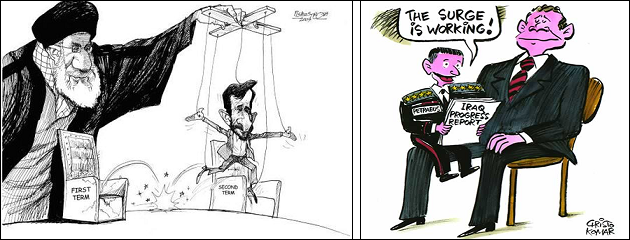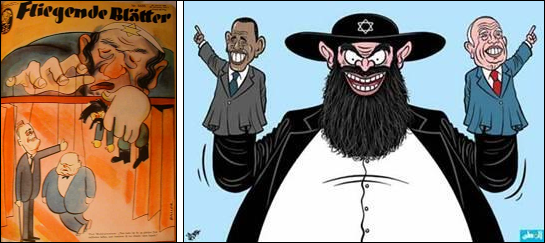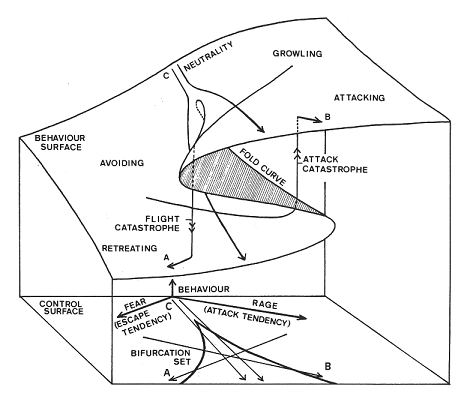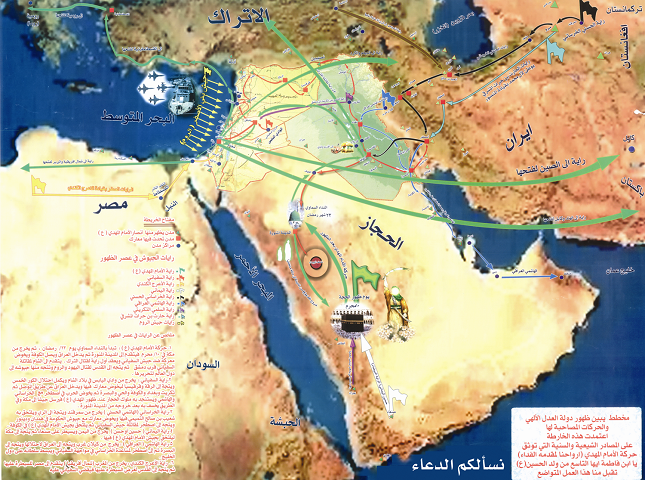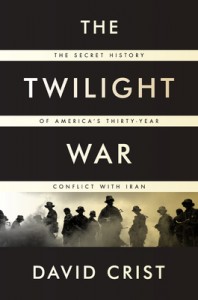[ by Charles Cameron — who’s giving advice to the head of CENTCOM these days? — a “prophetic” thriller novelist whose latest book concerns nuclear weapons and Iran ]
.
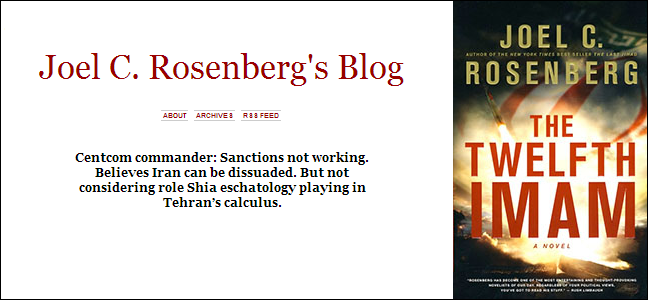
Here’s the advice apocalyptic thriller writer and political consultant Joel Rosenberg gave GEN Mattis, just two days ago:
I have deep respect for General Mattis as a military leader. Thus, I would encourage him to consider the role eschatology is playing in Tehran’s calculus. Iran’s Ayatollah Khamenei and President Ahmadinejad and their inner circle of advisors are not being driven by normal geopolitical and economic calculus, but rather by a Shia Islamic End Times theology.
I’m very interested in Islamic end times theology myself, and have a question:
What does Rosenberg claim that theology is, and what does he see as its ramifications in terms of CENTCOM — whose remit most notably includes Afghanistan, Egypt, Iran, Iraq, Saudi Arabia, Syria, Pakistan and Yemen?
**
Here’s what he says:
They believe the End of Days is at hand. They believe their messiah known as the Twelfth Imam or the “Mahdi” is coming soon.
That’s the theology as he describes it — the rest is geopolitical interpretation, no doubt favoring as well as influencing his own political ideas:
They believe that the way to hasten the coming of the Mahdi is to annihilate Israel (which they call the “Little Satan”) and America (which they call the “Great Satan.”) I wrote about this in detail in my non-fiction book, Inside The Revolution. And I factor this thinking into my current novel series, including The Twelfth Imam, The Tehran Initiative, and Damascus Countdown to consider how it could play out in real life. Such eschatology requires Iran’s leaders to acquire nuclear weaponry and the means to deliver it in order to please Allah and their coming messiah and king. As a result, the international is unlikely to convince them to disobey their most-deeply held religious beliefs through diplomacy or sanctions. A credible military threat might work, but we’re nearly out of time. Actual military action may soon be the only option. No one wants a war. I don’t. But we don’t want to have a genocidal cult to obtain and use nuclear weapons.
Hey, I don’t want a nuclear war, either. But does the Ayatollah Khamenei? Really?
**
Do you think nobody in DC listens to Rosenberg? Even before he wrote his books, when he was still only 27 and a “legman” for Rush Limbaugh, the New York Times carried a feature on him calling him “a Force in the Capital” which quoted a Senior VP at the Heritage Foundation:
I’ve been at meetings of conservative activists, and they have paid extraordinary deference and have been solicitous of him.
— but you can read the whole piece. And now, eighteen years later, he has a strong of NY Times best-sellers to his name, both fiction and non-fiction — and for his latest thriller, Damascus Countdown, published this week, Porter Goss, ex CIA Director, writes:
Whenever I see a new Joel Rosenberg book coming out, I know I need to clear time on my calendar. His penetrating knowledge of all things Mid-eastern — coupled with his intuitive knack for high stakes intrigue — demand attention.
So it’s worth asking — just how penetrating is that knowledge? And in particular, just how penetrating is it about the Iranian Twelfth Imam or Mahdi, who features prominently in his most recent series of books?
**
Three years back, Glenn Beck interviewed this same Joel Rosenberg, who writes about end-times Christianity and Islam and the need to support Israel from an end-times perspective — and the pair of them put out a sadly and dangerously muddled message. This excerpt from the transcript is worth noting for the significance it attributes to Mahdist eschatology and thus insinuates into the minds of millions of Americans:
BECK: OK. So, the Ayatollah Khomeini and the revolution of ‘79, he said these 12ers are too crazy for even him. What happened, because — is Ahmadinejad the only one? Are there a lot of them? It’s my understanding that the government now is full of these people. Is that true?
ROSENBERG: That’s right. Well, the Ayatollah Khamenei, the current supreme leader, was a disciple of the Ayatollah Khomeini.
BECK: OK.
ROSENBERG: Apparently, it’s turned out that he has been a secret closet 12er, because he clearly believes the same thing as Ahmadinejad.
Here’s what’s wrong: both Beck and Rosenberg seem to have confused “Twelvers” (the Ithna’ashariyya who make up about 85% of all Shi’a, though there are important smaller sects such as the Ismai’li) with a small and secretive faction within the Iranian Shi’a, almost certainly the Hojjatieh.
Beck says:
I want to talk to you about something that nobody seems to ever notice when they talk about Iran. When we’re talking about Iran, we’re talking about people, the leaders, that are called, they’re called “Twelvers” — they believe in the Twelfth Imam, the Mahdi. This is one spooky dude. Twelvers are so dangerous that the Ayatollah Khomeini at one point banned them, said we’ve gotta kill ’em all because they’re too crazy — the Ayatollah Khomeini said that.
It makes absolutely no sense to say that the Ayatollah Khomeini condemned the Twelvers — he was their leader in Iran — but he did oppose the (arguably extremist) Hojjatieh, which was basically a secret society — and that is almost certainly the group that Beck was thinking of.
But then Joel Rosenberg seems to get swept up in Beck’s confused and confusing rhetoric, and goes on to call the Ayatollah Khamenei “a secret, closet Twelver” — a phrase he also uses in his 2010 book, The Twelfth Imam (pp. 178, 259), and which is particularly inept since Rosenberg knows enough to have discussed the Hojjatieh in his book Inside The Revolution (copyright 2009, 2011), in which he writes (pp. 161-62):
During this same period, it appears Ahmadinejad was also involved in a shadowy Islamic society known as the Hojatieh, whose leaders taught that the Twelfth Imam was coming soon and whose members believed they were required to take spiritual (but not political) actions to hasten his coming. … the movement discouraged people from being fully devoted to creating an Islamic state, preferring instead to wait for it to come from the sky. In 1983, therefore, Khomeini actually banned the Hojatieh, and Ahmadinejad seems to have subsumed his sympathies for the group to protect his opportunities for career advancement.
**
I am happy to report that Joel Richardson, the other Joel currently writing about Islamic apocalyptic from a Christian end-times perspective, corrects Beck and Rosenberg on this point in his blog, Joel’s Trumpet:
Beck needs to have me on sometime. He gets a lot of his info wrong. Ayatollah Khomeini never banned “Twelvers”, as he himself was one. He banned the Hojjatieh of which Ahmadinejad is arguably a member of and which Mesbah Yazdi below is as well.
Beck’s the one Joel Richardson was addressing, but his critique applies equally to both Beck and Rosenberg. But this post is getting overlong, so I’ll continue with background from a scholar friend in a continuation of this post…



